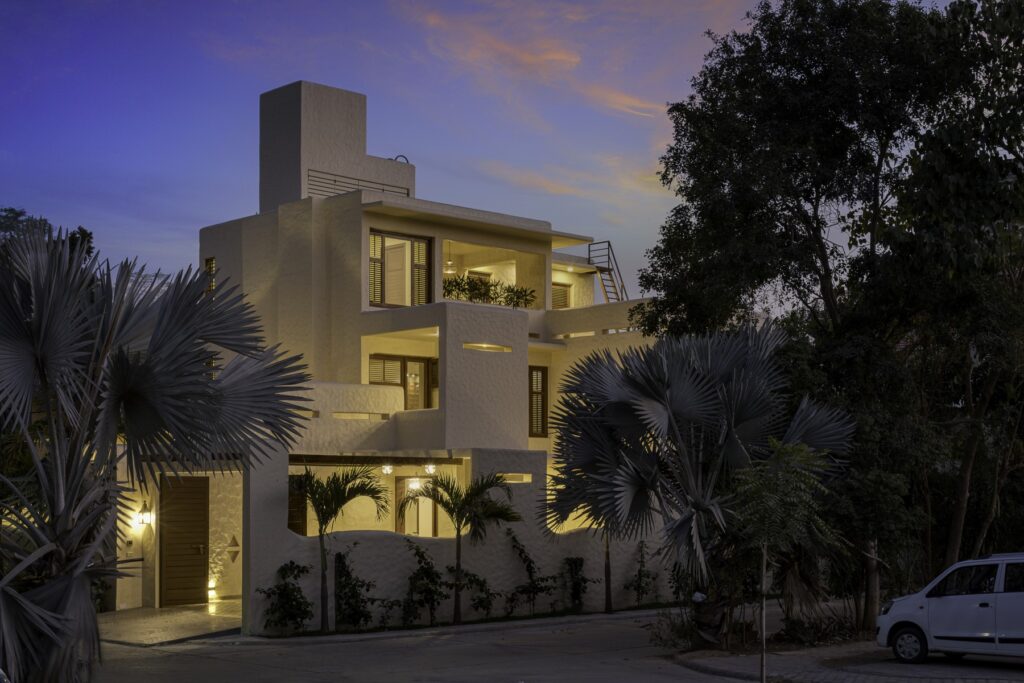
Leisure, tranquillity and adaptation of a traditional Moroccan house are the key elements of this home—Casa Aum—in Ahmedabad. The client’s brief stated that the language of this residential space ought to teleport us to a Moroccan-style home, having a significant connection with nature. They wanted to have open yet private spaces with a completely soothing atmosphere. This made the architects design an open home, blurring the boundaries between internal and external spaces, the house is planned in an extroverted manner bringing in natural light and yet taking care of the weather in that region.
Our first impression was to create a stunningly beautiful home with a basic form of straight walls and large openings with flat slabs, edges curved (creating the language of a Moorish design) The orientation of the house and its strategic positioning of elements such as the courts and open spaces bring in ample amount of daylight and at the same time avoid direct heat gain. Volumes are played to create multiple leisure spaces with a landscaped terrace accessible from the first floor. The architectural vocabulary of this home was envisaged representing Mediterranean elements.
Approaching and understanding what the site has to offer us, we started to design the external spaces – open and green and slowly venturing into the interior areas. A simple plan was developed capturing the essence of viewpoints. The ground level houses the common areas with the first and the second consisting of bedrooms with play-in levels, creating a profuse expanse on the interior.
The design theme of this home is a complete mix of elements of nature, vibrant colours, highly adorned furniture and accessories. The house experiences a magical dance of shadows through the wooden pergolas, slits on the frontal elevation and huge fenestrations in all the rooms. The living room opens up to the external courtyard spaces which in turn adds a voluminous formal breakfast space overlooking the pooja court, directly accessible from the entry foyer. The staircase as an element separates the formal living room with dining area, serving as the focal point of the home. The idea of having a Moroccan home is majorly achieved through the imposition of hand-plastered walls, arches, geometric designs and impressive stone works. Kudos to the local artisans for this intricate crafty construction.
Choosing an earthy colour palette reflecting the desert hues for the shell was imperative for the architects. Beige and sand colour textures along with creatively crafted tiles complement the surroundings. The lighting of the entire home was accentuated with lamps and pendants of geometric shapes made of stained glass with a tinge of wood. Hanging decorative mirrors with deeply carved wooden frameworks and onion dome-shaped frames for the mirrors in the restrooms added to the interior value of the home.
The landscape design manicured a crucial role in establishing connect between the house and its existing surroundings.
With all of these elements and palettes put together, this home in Ahmedabad is a blend of Moroccan & Indian styles… casa AUM.
Gallery:




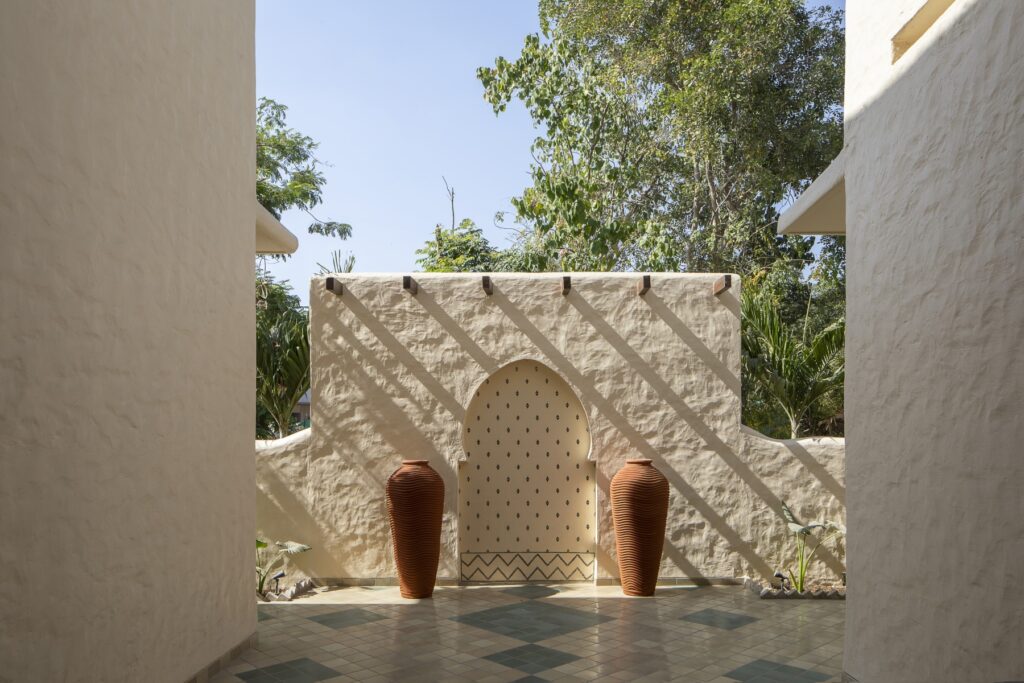

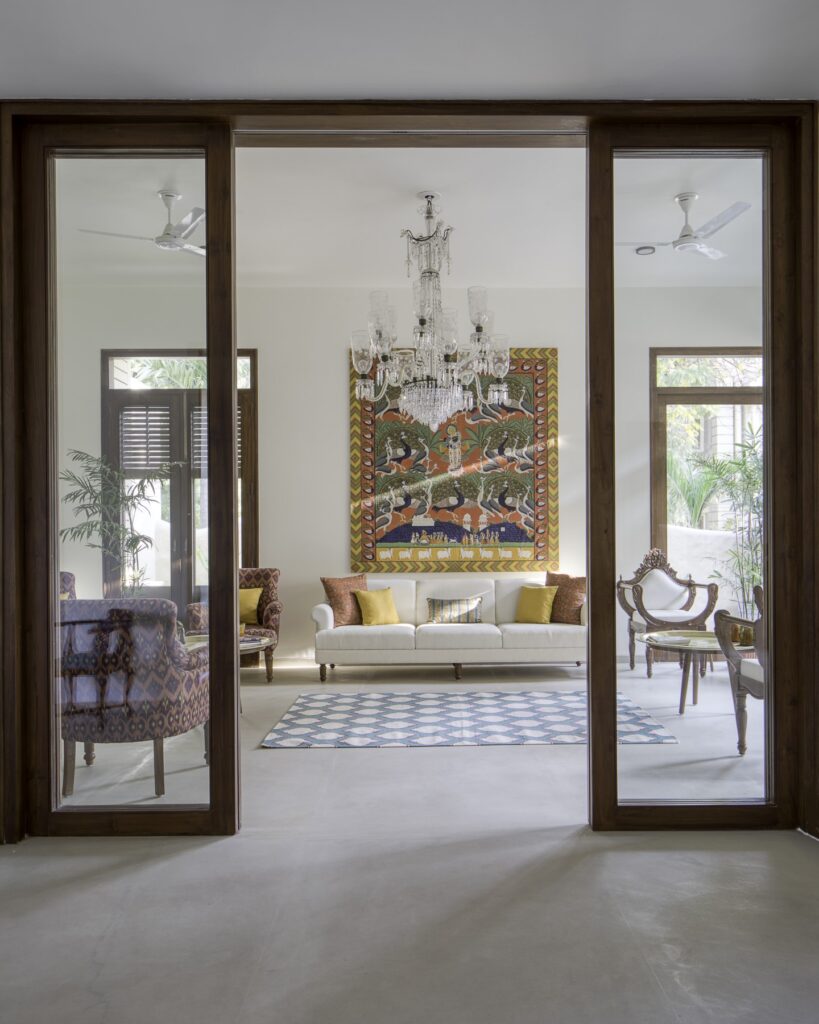
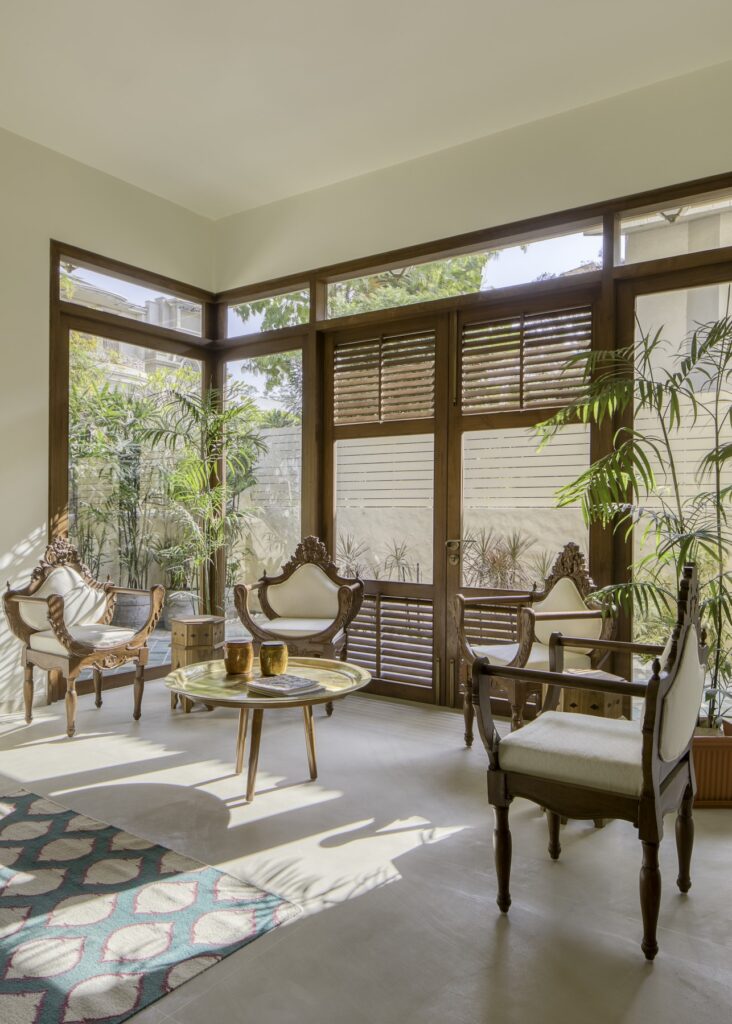


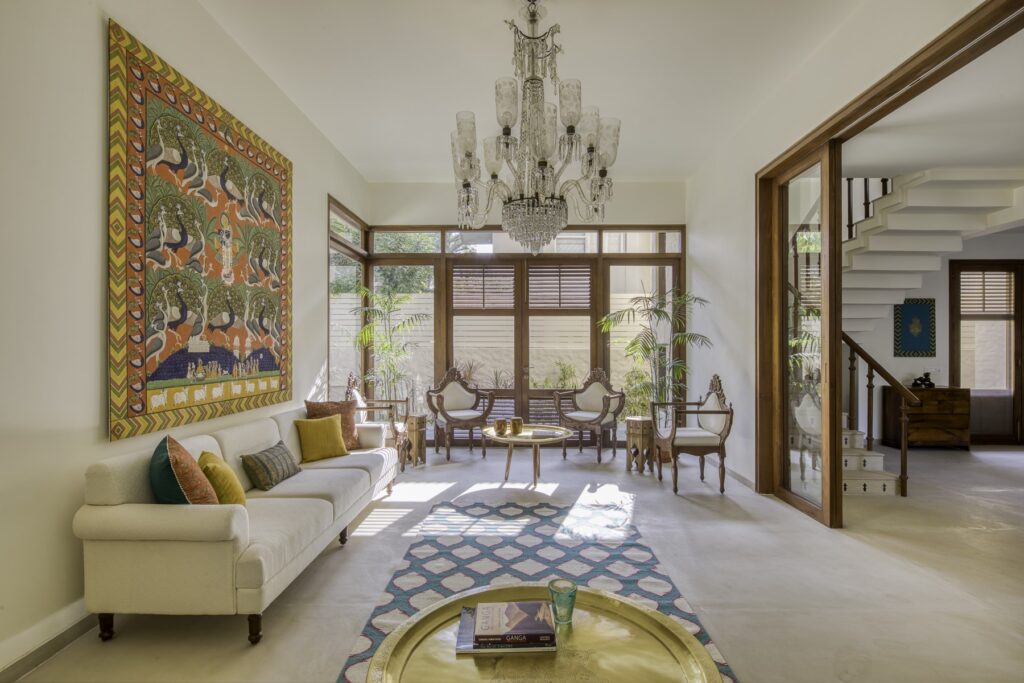

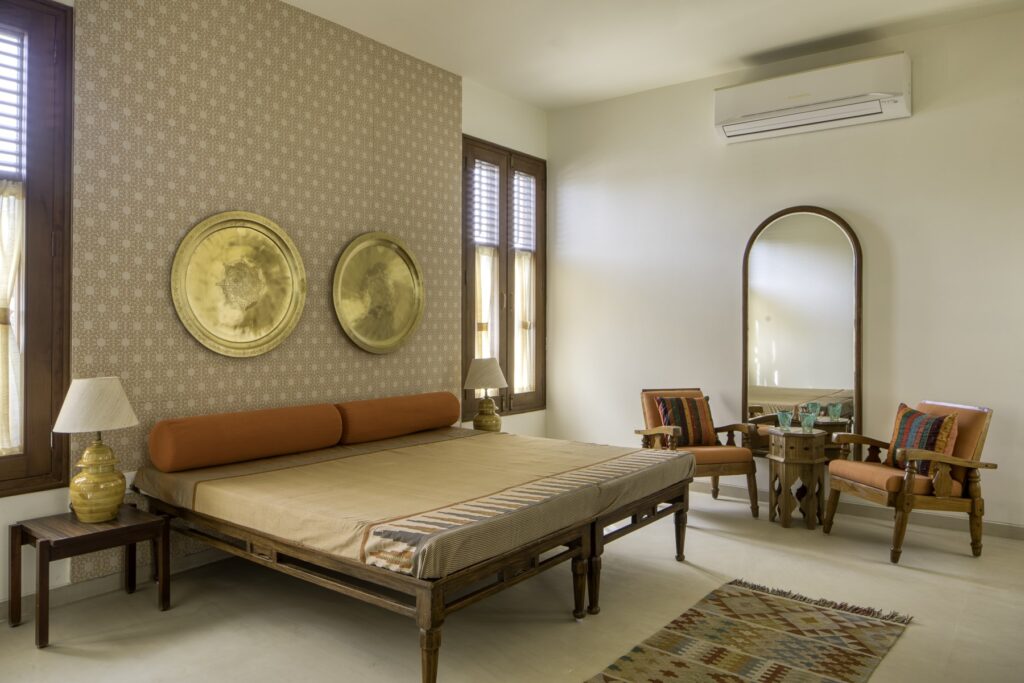


Project Details:
Name: Casa Aum – Residence for Sujan and Aastik
Location: Ahmedabad, Gujarat, India
Status: Completed (2020)
Typology: Residential Architecture
Client: Sujan and Aastik
Designed by: Mistry Architects
Built-up area: 3900 sq. ft.
Plot area: 3600 sq. ft.
Contractor: M/s. Shree Constructions
Photographs by: Umang Shah






